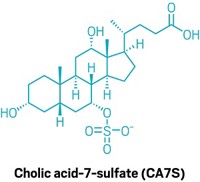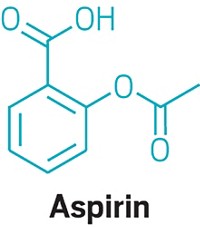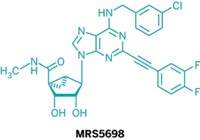Advertisement
Grab your lab coat. Let's get started
Welcome!
Welcome!
Create an account below to get 6 C&EN articles per month, receive newsletters and more - all free.
It seems this is your first time logging in online. Please enter the following information to continue.
As an ACS member you automatically get access to this site. All we need is few more details to create your reading experience.
Not you? Sign in with a different account.
Not you? Sign in with a different account.
ERROR 1
ERROR 1
ERROR 2
ERROR 2
ERROR 2
ERROR 2
ERROR 2
Password and Confirm password must match.
If you have an ACS member number, please enter it here so we can link this account to your membership. (optional)
ERROR 2
ACS values your privacy. By submitting your information, you are gaining access to C&EN and subscribing to our weekly newsletter. We use the information you provide to make your reading experience better, and we will never sell your data to third party members.
Biological Chemistry
Possible molecular mechanism behind gastric bypass surgery identified
Researchers pinpoint lipid involved in dietary changes after surgery in rats
by Ryan Cross
January 5, 2017
| A version of this story appeared in
Volume 95, Issue 2
Gastric bypass surgery is one of the most successful weight-loss interventions for treating obesity. Now, by performing the surgery on rats, scientists at Leipzig University have identified a molecular pathway between the gut and the brain that may explain the surgery’s underlying success.
Gastric bypass surgery reroutes the intestines and creates a much smaller stomach pouch, making patients feel full faster. When Wiebke K. Fenske and colleagues performed the surgery on rats, not only did the rodents lose weight, they also preferred low-fat foods to high-fat foods.
At the same time, Fenske’s team saw that the surgery increased synthesis of oleoylethanolamide (OEA) in the intestines, a change they believe is responsible for the weight loss and behavior shift. OEA is a lipid that binds the α-type peroxisome proliferator-activated receptor (PPAR-α), which helps absorb, store, and use fat. When the researchers chemically inhibited PPAR-α in rats that had undergone surgery, their preference switched from a low-fat diet to a high-fat one (Cell Metab. 2017, DOI: 10.1016/j.cmet.2016.12.006).
The team also showed that the OEA pathway connects the gut to the brain via the vagus nerve, and that severing that nerve or blocking downstream dopamine receptors in the brain caused the rats to return to their high-fat-preferring ways.
Hans-Rudolf Berthoud of Louisiana State University says that although the research demonstrates lots of interesting changes in the rats’ physiology, “The question is, which changes are important?” Many pathways are being studied as the basis for obesity beyond OEA, he notes.
Daniele Piomelli of the University of California, Irvine, says if the study is “confirmed in humans, it would provide a mechanistic basis for the therapeutic effects of bariatric surgery. It does not need to be the only basis, of course, but could be an important one.”






Join the conversation
Contact the reporter
Submit a Letter to the Editor for publication
Engage with us on Twitter